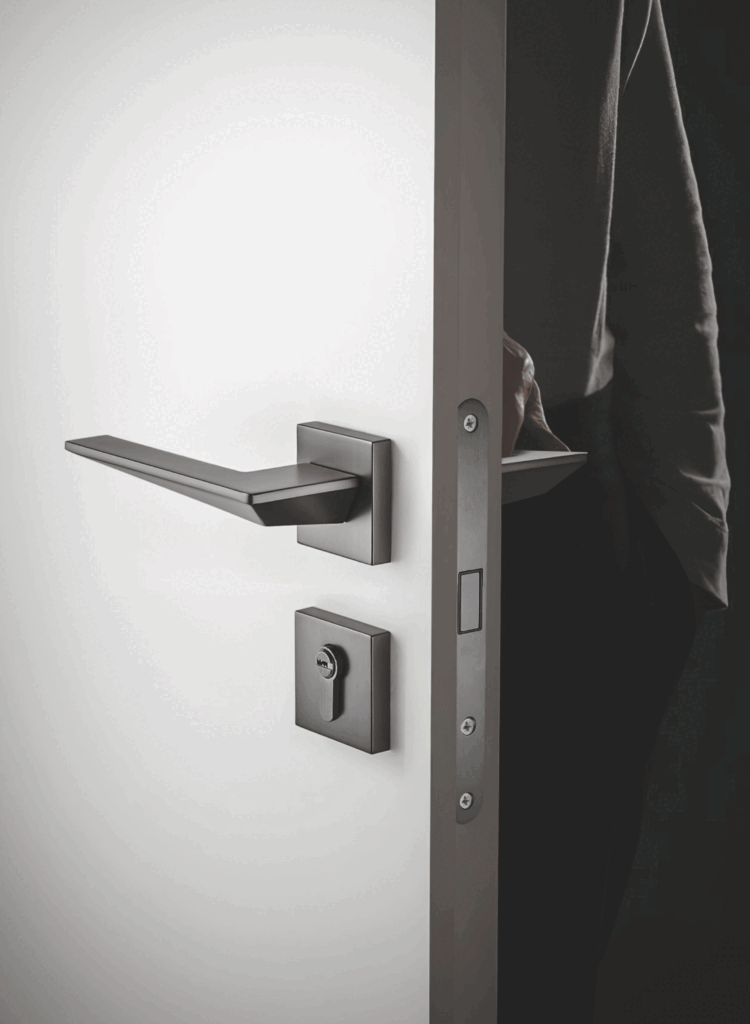
Introduction
When securing doors, deadbolts are the gold standard. But should you choose a single cylinder or double cylinder deadbolt? The answer depends on security needs, building codes, and user convenience.
As a door hardware supplier with 20+ years of experience, we help door manufacturers, distributors, and procurement managers select the right locking solutions. This guide compares both types to help you make an informed decision.
What Is a Single Cylinder Deadbolt?
A single cylinder deadbolt has:
✔ Key-operated cylinder on the outside
✔ Thumb turn (manual latch) on the inside
Common applications:
- Residential homes
- Office buildings
- Apartment complexes
- Hospitality (hotels, motels)
Best paired with:
- Door handles & knobs (for smooth operation)
- Heavy-duty hinges (to support security doors)
- Door closers (for automated shutting)
Explore our single cylinder deadbolt collection
Single Cylinder Deadbolt: Pros & Cons
Pros ✅ | Cons ❌ |
Quick exit in emergencies (no key needed inside) | Less secure on glass doors (intruders can break glass and turn the thumb latch) |
Lower cost (ideal for bulk residential projects) | Not suitable for high-security areas |
Complies with most fire safety codes | Limited access control |
Easy to install & maintain | Vulnerable to lock picking (if low-quality cylinder) |
Best for: Homes, offices, and buildings where fast egress is a priority.
What Is a Double Cylinder Deadbolt?
A double cylinder deadbolt requires:
✔ A key to lock/unlock from BOTH sides (no thumb turn)
Common applications:
- Glass doors (storefronts, patio doors)
- Commercial buildings (banks, schools, government facilities)
- High-security areas (server rooms, storage units)
Best paired with:
- Reinforced strike plates (for anti-kick protection)
- Grade 1 or Grade 2 security cylinders (pick-resistant)
- Access control systems (for key management)
Browse our double cylinder deadbolt options
Double Cylinder Deadbolt: Pros & Cons
Pros ✅ | Cons ❌ |
Maximum security (no internal thumb turn for intruders to exploit) | Slower emergency exit (key required inside—dangerous in fires) |
Ideal for doors with glass panels (prevents reach-through attacks) | Higher cost (more complex mechanism) |
Prevents unauthorized unlocking from inside (useful for rentals, retail) | Key management challenges (lost keys = lock replacement) |
Complies with commercial security standards | Banned in some residential areas (fire safety regulations) |
Best for: Businesses, institutions, and properties needing strict access control.
How to Choose: Single vs. Double Cylinder Deadbolt?
1. Security Requirements
- High-risk locations? → Double cylinder (banks, retail stores).
- Standard residential? → Single cylinder (faster escape, lower cost).
2. Door Material & Design
- Glass or French doors? → Double cylinder (no internal latch to manipulate).
- Solid wood/metal doors? → Single cylinder (convenient & code-compliant).
3. Compliance with Safety Regulations
- Check local fire codes—some prohibit double cylinder deadbolts in homes.
- Commercial buildings often require them for enhanced security.
4. Budget & Maintenance
- Bulk orders for housing? → Single cylinder (cost-effective).
- Long-term security investment? → Double cylinder (higher durability).
Pro Tip: For balanced security, combine a single cylinder deadbolt with a smart lock or reinforced door hardware.
Summarize
✔ Single cylinder deadbolt = Best for homes, offices, and hotels (quick exit + affordability).
✔ Double cylinder deadbolt = Best for retail, schools, and high-security buildings (maximum protection).
Need bulk pricing or custom solutions? Contact our UMAY sales team for high-security deadbolts, handles, hinges, and more.
Share This Story, Choose Your Platform!

